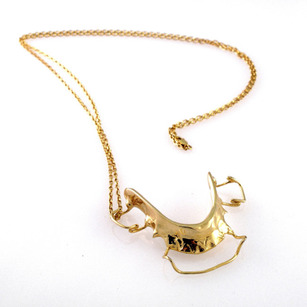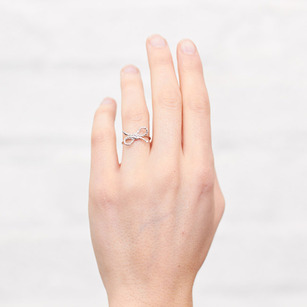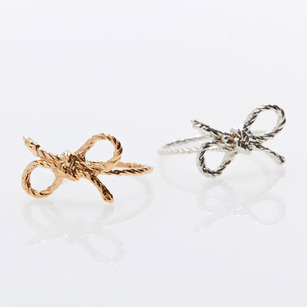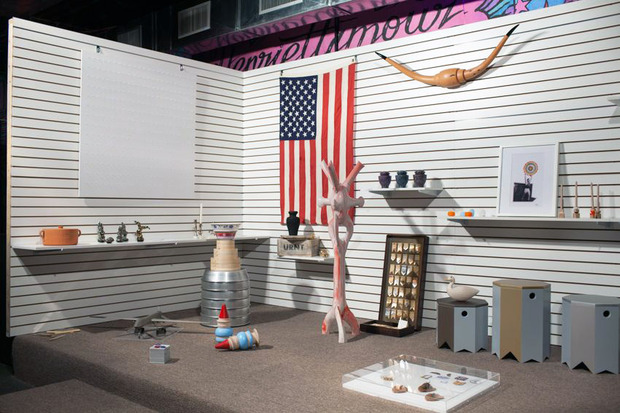Interview: Experimental Designer Kiel Mead
The NYC-based creative discusses his aim to enhance the human experience

Sponsored content:
Capturing the spirit of the expression “one mans trash is another mans treasure,” designer Kiel Mead repurposes found objects into nostalgic gems. Born east of the Midwest, Mead relocated to New York to attend Pratt Institute. Transitioning from furniture design to jewelry, Meads cult classic Forget Me Knot ring was featured in the MoMA Design store even before he graduated. Experimenting with everyday objects, Mead commemorates the growing pains of youthrendered by necklaces composed of brass retainers (molded after his brothers own piece) and discarded chewing gum.

An avid design enthusiast, Mead has worked as the Creative Director for Brooklyn-based designer showcase store, Future Perfect (which featured Meads re-purposed badminton birdie lamp and iconic Crucifix door-knocker) and as the Director of Exterior Design at Fab. Recognizing a need to sustain a new generation of designers, Mead founded The American Design Club (AmDC), a platform to support and connect American artists to a larger audience. Launching in 2008 with a show entitled “Outside of Sorts,” AmDC creates shows and pop-up stores based on themes that reflect the same irreverence and nostalgic charm that makes Meads own work innovative.
Thanks to The Lincoln Motor Company we visited Mead to learn more about his inspiration and desire to turn everyday objects into something special.
What was one of your favorite objects growing up as a kid “East of the Midwest”?
It’s a funny way of saying that I live in Western NY, just south of Buffalo in a community called Van Buren Bay, which is on the coast of Lake Erie. To answer your question, I was quitefascinated with anything that the lake pushed to shore. From the beach glass to skipping stones, dead fish and, of course, driftwood.
What piece of advice or learned lesson has helped shape you as a designer?
Love what you live with. Its sort of a motto I live bynot only for designing, but for consuming as well.
Many of your products are “made from life.” How do you go about turning ephemeral items into lasting jewelry?
Early on, I was interested in the idea of taking objects that are iconic but temporary and casting them in materials that will last longer than humans. It was my way of turning fleeting, nostalgic items into timeless memories that you can wear.


What inspired your eye-catching gum and retainer pieces?
For the gum and the retainer [pieces], I was experimenting with what I could get people to wear.The retainer was about howorthodontic hardware is coveted anddesiredwhen you are in middle school. Jewelry for your mouth. The retainer is also an object of the past. Turning a retainer into a necklace was my way of paying homage to a specific youthful right of passage. It’s also just funny. The gum necklace is sort of a similar storied project, but I was more interested in the idea that gum is gross but when it is cast and made out of brass it is more shocking and interesting than gross.


How did you go about creating your Forget Me Knot ringsdid you have weddings in mind when conceiving them?
The Forget Me Knot is a popular holding-placeengagementring for a couple until they can go out and buy a diamond ring together. It is also a very popular bridesmaid gift but when I made the Forget Me Knot, I was not thinking about weddings.For me, it was an experiment of the process. I was testing what I could get away with doing the lost wax process. String is a verymalleablematerial that also has a short life. After about 15 tries and a re-engineeringof the method, I was able to cast a perfect knot. This ring was the epitomeof my homage to nostalgic jewelry. Tie a string around your finger to remember somethingit doesn’t get much morememorablethan that.

The American Designer Club has come up with very inventive themes. Tell us a little about your work with the AmDC.
Working with the American Designer Club community is the most rewarding thing in my work world. We have been acatalystto so many amazing designers. Our themes have been the spark for new successful product. Threat, for example, gave life to Reed Wilson’s line of doormats. What started out as a funny way to deter an intruder spawned into an entire line ofhilariouswelcome mats. The concept for Threat came about because I wanted to do something different. I wanted to come up with a theme that was unexpected and yet has a gut reaction when you hear it.It is a universal feeling to be afraid of an intruder breaking into your home. We were blown away with all the objects American Designer Clubmemberscame up with. It inspired us to think of new themes that are similar to that gut reaction. With our shows, we are trying to flick on the lightbulb in a creative mind.
Everything in the world has already been created. It is our responsibility to continue to enhance the human experience.
What does the word “re-imagine” mean to you and how has it influenced your designs?
I constantly look at objects and think about how I can make it different. Everything in the world has already been created. It is our responsibility to continue to enhance the human experience. Making someone think about an object or a process in a new way by re-imagining its original use and purpose will enhance and advance us into the future.
Images courtesy of Kiel Mead, portrait courtesy of Alessandro Simonetti











